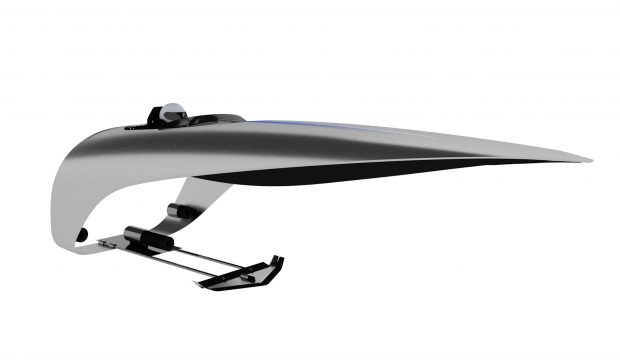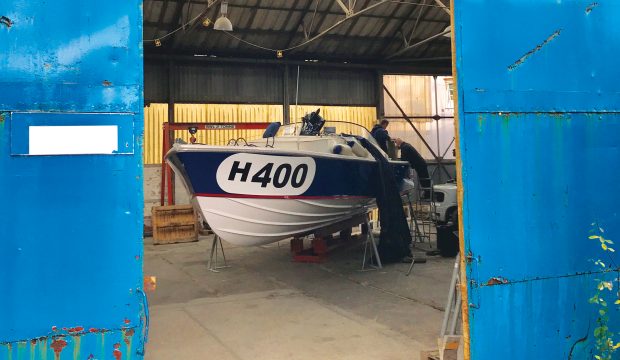With no safety cells on many offshore craft, it's time to broaden the courses
All motor sports carry a risk of injury. Motorboat competition probably has more than most, due in part to a lack of the necessary finance to introduce sophisticated safety measures. But while those actually competing face obvious dangers it turns out that those on the sidelines face risks of a different kind.
All inland circuit races are closely fought contests with boats travelling at high speeds often less than a metre apart. All competitors try their hardest to gain the edge and it is moments like these that risks of collision and injury are greatest.
To a certain extent single-seated circuit racing on inland waters has come a long way in avoiding injury. This is due to the introduction of the cockpit cell developed by Chris Hodges following the death of his close friend, Tom Percival, in the Belgium Grand Prix at Liege in August 1984.
The development of the cockpit cell revolutionised safety in circuit racing. Drivers now walk away from hair-raising accidents thanks to this British invention. Its success has since been adopted throughout the world in all manner of motorsports significantly reducing serious injury and death.
The cell has now become mandatory for the more powerful categories of powerboat racing as well as most other circuit racing classes. Cells have even been adopted for large Class 1 offshore catamarans mainly raced in the Middle East and United States but not in the UK and this is where the problem lies.
For some time there has been a great deal of effort on the British offshore scene to widen the sport by encouraging youngsters to get a taste of the sport at an early age. Junior racing first began on inshore circuits with single-seat, purpose-built craft designed specifically for the under 16s.
Although the class later withered in line with the overall decline of circuit sport several youngsters did indeed graduate up the scale, including Mark Wilson who later became a Formula 1 star.
Similar efforts have since been made in offshore racing, a leading South Coast club being one of the most recent organisers. The big problem however is that young people driving fast motor boats, even craft with minimal power, need to be carefully supervised by adult organisers. This means race courses being close inshore with a multilap format.
It was in July 2005 during a race for junior offshore drivers at Portland that a young 12 year old suffered life changing injuries when his craft was involved in a direct side impact collision.
While this accident was extremely tragic in itself the resulting litigation could bring hardship to a far wider number of people. It seems that the young lad will now require constant care. Hence his family sued the Royal Yachting Association’s race insurers for damages.
It has always been understood that anyone taking part in powerboat racing does so at their own risk regardless of how events are controlled. Crews and officials all have to sign an indemnity prior to being involved but it seems the court ruled that such disclaimers are not worth the paper they are written on. The judge therefore found in favour of the family of the injured youngster with a verdict of negligence on the part of the organisers.
While I personally feel negligence in this case would be difficult for me to recognise the court declared compensation in excess of the £5 million maximum covered by the third party RYA insurers, leaving almost one million to be found by those on the race committee. If this does go ahead it could mean some people having to remortgage their homes.
Whether or not this will be the eventual outcome is unclear but it does emphasise the fact that the RYA has for many years condoned tight offshore (salt water) racing on short circuits in complete contrast to the strict guidelines it stipulates for racing on rivers and lakes.
I’ve personally drawn the attention of various racing committees to this mistake for more than two decades and received nothing in return but ridicule. Why do competitors need to run along the shoreline bow to bow while turning marker buoys so close they can reach across and touch each other?
Offshore Circuit Racing and P1 SuperStock (ex-Honda Formula Four Stroke) both adopt this type of contest. Indeed, even the larger offshore classes once tried the same format in the false belief it would create a large spectator audience. It didn’t.
It all adds up to very close racing and unlike the inland circuits where boats carry a single crew member, all offshore racers, no matter how small, have a driver and co-driver, the latter deriving from the days when co-drivers handled navigation.
This means current offshore racing craft in the smaller classes, including those in what’s left of Offshore Circuit Racing (OCR), cannot be fitted with safety cells to protect crews from dangerous side impact.
The alternative? Take offshore racing back to sea where it all began and where fleets are well spread apart and not in close contact with each other…









